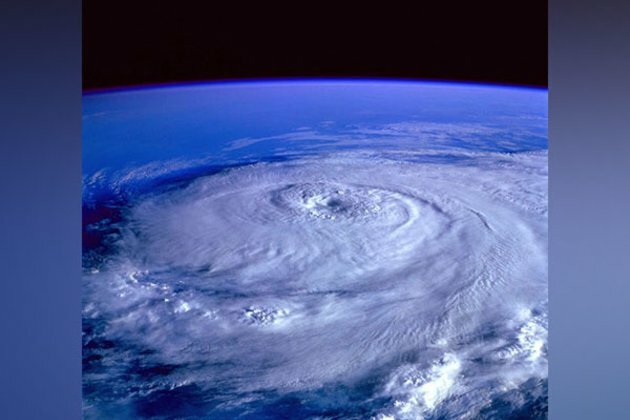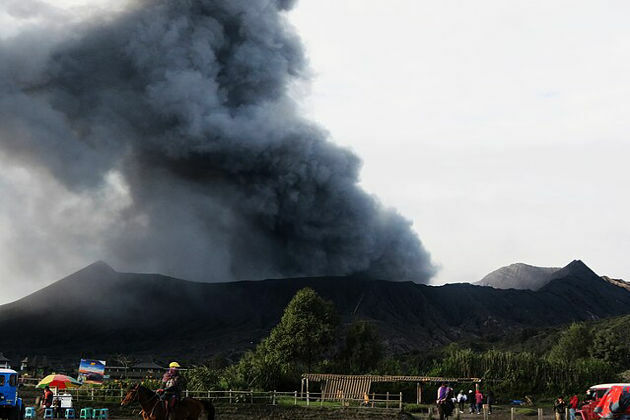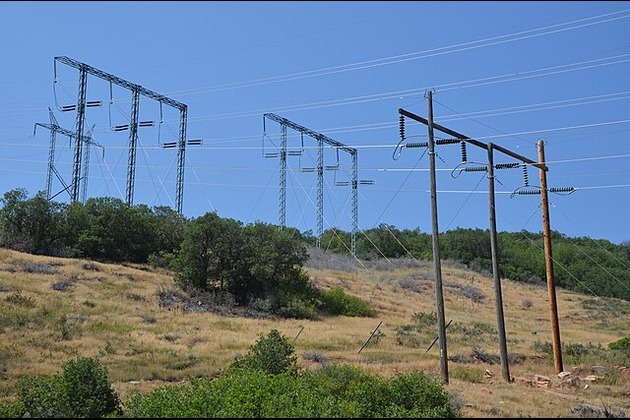Southern Hemisphere is stormier than the North; Here's why
ANI
06 Dec 2022, 16:25 GMT+10

Chicago [US], December 6 (ANI): For millennia, mariners from all across the world knew where the most terrifying storms waited: the Southern Hemisphere. One passenger on an 1849 voyage rounding the tip of South America reported, "The waves ran mountain-high and threatened to overrun [the ship] with every roll."Many years later, scientists poring over satellite data could finally put figures to sailors' intuition: the Southern Hemisphere is, in fact, 24 per cent stormier than the Northern. However, no one knew why.
A recent study led by Tiffany Shaw, a climate scientist at the University of Chicago, provides the first specific explanation for this phenomenon. Shaw and her colleagues discovered two primary culprits: ocean circulation and Northern Hemisphere mountain ranges.
The study also found that this storminess asymmetry has increased since the beginning of the satellite era in the 1980s. They found the increase was qualitatively consistent with climate change forecasts from physics-based models.
'A tale of two hemispheres': For a long time, we didn't know very much about the weather in the Southern Hemisphere: most of the ways we observe weather are land-based, and the Southern Hemisphere has much more ocean than the Northern Hemisphere does.
But with the advent of satellite-based global observing in the 1980s, we could quantify just how extreme the difference was. The Southern Hemisphere has a stronger jet stream and more intense weather events.
Ideas had been circulated, but no one had established a definitive explanation for this asymmetry. Shaw--along with Osamu Miyawaki (PhD'22, now at the National Center for Atmospheric Research) and the University of Washington's Aaron Donohoe--had hypotheses from their own and other previous studies, but they wanted to take the next step. This meant bringing together multiple lines of evidence, from observations, theory, and physics-based simulations of Earth's climate.
"You can't put the Earth in a jar," Shaw explained, "so instead we use climate models built on the laws of physics and run experiments to test our hypotheses."They utilised a computational model of Earth's climate based on physical rules to duplicate the observations. Then, one by one, they removed different variables and assessed their impact on storminess.
Topography was the first variable they investigated. Large mountain ranges impede air movement, reducing storms, and the Northern Hemisphere has larger mountain ranges.
When the scientists levelled every peak on the planet, half of the variation in storminess between the two hemispheres vanished.
The other half had to do with ocean circulation. Water moves around the globe like a very slow but powerful conveyor belt: it sinks in the Arctic, travels along the bottom of the ocean, rises near Antarctica and then flows up near the surface, carrying energy with it. This creates an energy difference between the two hemispheres. When the scientists tried eliminating this conveyor belt, they saw the other half of the difference in storminess disappear.
Getting even stormier: Having answered the fundamental question regarding why the southern hemisphere is stormier, the researchers moved on to examine how storminess has changed since we've been able to track it.
They discovered that the storminess imbalance has worsened since the satellite era began in the 1980s, based on decades of measurements. That is, the Southern Hemisphere is becoming even more stormy, while the average change in the Northern Hemisphere has been small.
Changes in storminess in the Southern Hemisphere were linked to changes in the ocean. They discovered a comparable ocean influence in the Northern Hemisphere, but its effect is cancelled out by solar absorption in the Northern Hemisphere due to the lack of sea ice and snow.
The scientists examined the models used to forecast climate change as part of the Intergovernmental Panel on Climate Change assessment report and discovered that they all showed the same signals--increasing storminess in the Southern Hemisphere and negligible changes in the Northern Hemisphere--serving as an important independent check on the accuracy of these models.
It may seem strange that such a seemingly simple question--why is one hemisphere stormier than the other--went unanswered for so long, but Shaw emphasised that the discipline of weather and climate physics is still in its infancy in comparison to many other fields.
Only after WWII did scientists begin to develop models of the physics that govern large-scale weather and climate (of which key contributions were made at the University of Chicago by Prof. Carl-Gustaf Rossby).
But having a deep understanding of the physical mechanisms behind the climate and its response to human-caused changes, such as those laid out in this study, are crucial for predicting and understanding what will happen as climate change accelerates.
"By laying this foundation of understanding, we increase confidence in climate change projections and thereby help society better prepare for the impacts of climate change," Shaw said. "One of the major threads in my research is to understand if models are giving us good information now so that we can trust what they say about the future. The stakes are high and it's important to get the right answer for the right reason." (ANI) Share
Share
 Tweet
Tweet
 Share
Share
 Flip
Flip
 Email
Email
Watch latest videos
Subscribe and Follow
Get a daily dose of Oakland Times news through our daily email, its complimentary and keeps you fully up to date with world and business news as well.
News RELEASES
Publish news of your business, community or sports group, personnel appointments, major event and more by submitting a news release to Oakland Times.
More InformationUnited States
SectionNew U.S. guidelines may cut daily alcohol limit from advice
WASHINGTON, D.C.: The U.S. government is preparing to revise its influential dietary advice, with a significant shift: dropping the...
Amazon’s Zoox unveils plan to build 10,000 robotaxis a year
HAYWARD, California: In a significant step toward its commercial debut, Amazon-owned Zoox has unveiled its first factory dedicated...
UBS: Over 379,000 Americans became millionaires last year
ZURICH, Switzerland: The U.S. saw an extraordinary rise in wealth last year, with more than 1,000 people crossing into millionaire...
U.S. stocks restricted by tensions in Middle East
NEW YORK, New YorK - U.S. stocks closed mixed on Friday, with gains and losses modest, as investors and traders weighed up the escalation...
US consumers cut back after early surge ahead of Trump tariffs
WASHINGTON, D.C.: Retail sales dropped sharply in May as consumer spending slowed after a strong start to the year, primarily due to...
Mitsubishi joins automakers raising prices after import tariffs
WASHINGTON, D.C.: Mitsubishi Motors is the latest automaker to raise prices in the United States, joining a growing list of car companies...
International
SectionNew U.S. guidelines may cut daily alcohol limit from advice
WASHINGTON, D.C.: The U.S. government is preparing to revise its influential dietary advice, with a significant shift: dropping the...
UBS: Over 379,000 Americans became millionaires last year
ZURICH, Switzerland: The U.S. saw an extraordinary rise in wealth last year, with more than 1,000 people crossing into millionaire...
The Hague faces lockdown for global leaders' meet
THE HAGUE, Netherlands: The city that prides itself on being a beacon of peace and justice—home to institutions like the International...
Drug shortages and layoffs spark health crisis in Argentina
BUENOS AIRES, Argentina: Since taking office in December 2023, Argentine President Javier Milei has implemented sweeping austerity...
Volcanic ash grounds flights to Indonesia, disrupts travel to Bali
LEMBATA, Indonesia: Indonesia's Mount Lewotobi Laki Laki erupted dramatically on June 18, generating substantial ash and smoke plumes....
REE misjudgment caused April blackout, says Spain's energy chief
MADRID, Spain: A routine oversight by Spain's power grid operator, REE, has been identified as the trigger behind the large-scale blackout...











